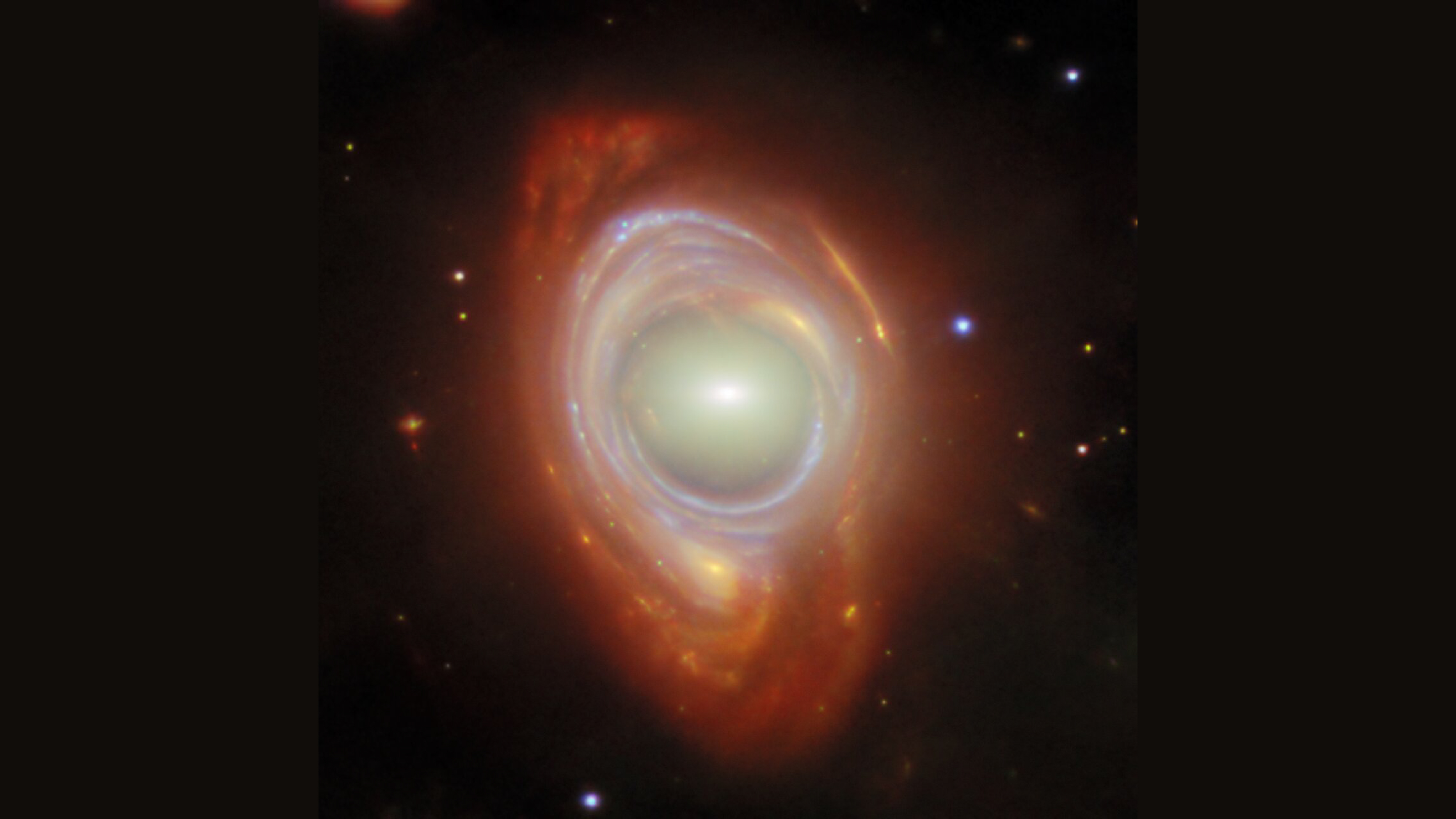
The James Webb Space Telescope (JWST) has captured a stunning image of a bizarre astronomical optical illusion.
This “rare cosmic phenomenon”, called an Einstein ring, appears as a single eye-like orb in the darkness of space, but is actually a distorted view of two distant galaxies in the constellation Hydrus.
In the bright center of this cosmic spectacle is one galaxy, while the stretched orange and blue color surrounding it is the light from another galaxy located behind it. The light from the more distant galaxy looks like a ring because it has been distorted by gravitational lensing.
Gravitational lensing occurs when the gravity of a massive object — like a galaxy or a black hole — bends the light from a more distant object. This effect is a direct consequence of Einstein’s theory of relativity, which states that mass warps the fabric of space-time, causing light to follow curved paths, like a ball rolling down a curved slope.
“This effect is much too subtle to be observed on a local level, but it sometimes becomes clearly observable when dealing with curvatures of light on enormous, astronomical scales,” ESA representatives wrote in a statement.
This latest image was released by ESA and the Canadian Space Agency today (March 27) as their March picture of the month. It was captured by JWST’s Near-InfraRed Camera instrument and also includes data from the Wide Field Camera 3 and the Advanced Camera for Surveys instruments on the Hubble Space Telescope.
Related: 42 jaw-dropping James Webb Space Telescope images
Einstein rings like these are created when the distant light source, the massive lensing object, and the observer are perfectly aligned, resulting in the light appearing as a complete ring wrapped around the lensing object. As a result, they are rare.
In this case, the elliptical galaxy in the foreground — which is part of a galaxy cluster named SMACSJ0028.2-7537 — is so massive that it is bending the light of the spiral galaxy situated far behind it.
“Even though its image has been warped as its light travelled around the galaxy in its path, individual star clusters and gas structures are clearly visible,” according to the statement
The fascinating phenomenon of gravitational lensing also allows astronomers to better understand the universe.
Light emitted from distant galaxies, which existed long ago in the past, is often too faint to be observed directly from Earth. Strong gravitational lensing magnifies these galaxies, making them appear larger and brighter, and allowing astronomers to study some of the first galaxies formed after the Big Bang.
“Objects like these are the ideal laboratory in which to research galaxies too faint and distant to otherwise see,” the ESA statement noted.
Additionally, because black holes and dark matter don’t emit light, scientists can use gravitational lensing to detect and study these phenomena by measuring how they bend and magnify background stars.
